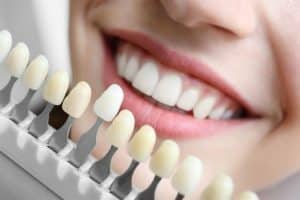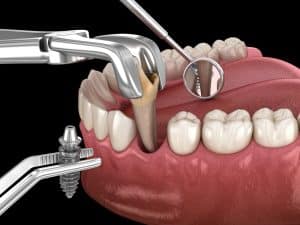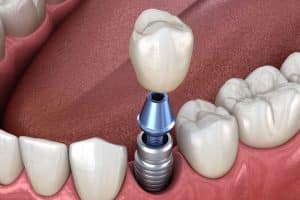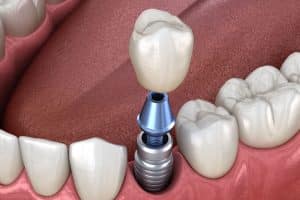We will explore everything related to dental veneers in Turkey and how they can transform your smile and enhance your beauty and self-confidence and we will go into detail about this amazing procedure, from its benefits and implementation process, to its care and long-term sustainability, and if you are looking for a way to improve the appearance of your teeth and get a bright, beautiful smile, read on to provide you with the most important information and details..
What is dental veneer in Turkey and when do we need it?
Dental veneers in Turkey or porcelain veneers are a thin shell that is the color of the tooth and is installed on the front surface of the teeth to improve their aesthetic appearance, as it is made of porcelain or composite resin materials and is permanently bonded to the tooth.
Some people get one porcelain veneer in the event of a broken tooth, for example, but most people get six to ten porcelain veneers to get a symmetrical Hollywood smile, but the front teeth are the most common for dental veneers.
Veneers are usually used to treat the following cosmetic conditions:
- Broken teeth.
- Severe staining or uneven tooth color, which cannot be treated with teeth whitening.
- Small teeth.
- Pointed or abnormally shaped teeth.
Veneers can be used to close interdental spaces when orthodontic treatment is not appropriate, as for example, if one of the patient’s teeth is out of its natural position, veneers can, in some cases, return it to its correct position, and thus it is the best procedure to improve its appearance and occlusal position.
Types of dental veneers in Turkey
Let’s learn together about the types of dental veneers in Turkey:
Composite resin veneers:
If you choose a composite resin veneer, your dentist will apply acidic materials to the surface of the tooth before applying a thin layer of resin to the prepared tooth and itmay be necessary to apply additional layers of composite to achieve a suitable cosmetic appearance and then the doctor takes the final step, which is to harden the composite resin veneer with a specialized type of light rays.
Porcelain veneers:
Porcelain veneers can treat a number of cosmetic defects and these restorations are custom-made to fit your oral anatomy and the doctor will need to remove a layer of enamel and which leads to roughness in the surface of the prepared tooth, but in turn it helps the teeth to adhere to the tooth surface perfectly.
Lightly prepared veneer:
It is the least consuming option for tooth enamel, as it requires removing a small amount of enamel compared to traditional dental veneers, and it does not take a long time to complete and it is also specially made to fit your smile, and in many cases this type of veneer does not require local anesthesia, in addition to no need for a temporary veneer, but it is not suitable for everyone; So ask your doctor if it is right for you
Removable dental veneers:
This type hides dental defects and improves your smile and you can also put it on and remove it whenever you want, but it may make eating difficult, in addition to some negative effects on speech and there are not enough studies on removable dental veneers because many of them have only been around for a few years, so you should ask your doctor if this option is safe for you.
Features of dental veneers in Turkey:
- It can significantly improve the aesthetic appearance of your smile.
- Designed to blend in with your natural teeth, giving realistic results.
- It resists stains and pigmentation more than natural teeth.
- It may last for a long time, especially with good care.
Disadvantages of dental veneers in Turkey:
- You will lose at least some of the tooth’s natural enamel.
- Many types of veneers are non-reversible (i.e. irreversible).
- Your teeth may become more sensitive to heat (hot and cold) for a temporary period.
- It is possible for the porcelain veneer to fail and fall off, which will require re-treatment.
- Veneers are considered cosmetic, so their treatment expenses are not covered by insurance companies.
Dental veneer installation sessions, what are they?
In the following paragraphs, we will learn about dental veneer installation sessions:
First session:
- Part of the enamel is removed from the surface of the tooth, so that the veneer can adhere to the same place later and the amount of enamel removed is also very thin to match the thickness of the veneer lenses, so that the size of the tooth remains the same before and after treatment.
- The doctor may need to administer local anesthesia to ensure the patient’s comfort, but it is not necessary in most cases and after the tooth is prepared, the doctor takes an impression of the prepared tooth, which will be presented to the dental laboratory in addition to other information that the laboratory may need to make the veneers.
- The color of the surrounding teeth is matched using the veneers’ color guide, or what is known as (shade guide), to give the veneers a high aesthetic and a completely natural appearance.
Second session:
- The doctor will clean your teeth completely, and this is very necessary before applying the veneers, so that germs are not allowed to remain under the veneer, causing carious degeneration.
- After cleaning, a substance is used on all required teeth to make the dental tissue rougher, which makes the veneer adhere easily to the tooth and the doctor then uses dental cement to adhere the veneer lenses to the tooth, and then hardens the cement using ultraviolet rays.
- The second session (when the veneers are applied) does not actually last more than two hours, but the time may vary depending on the number of teeth to be treated with the veneers, and whether local anesthesia was performed or not.
Will I need a temporary veneer between the two sessions?
You will not need a temporary veneer, as the preparation taking place is very slight, and the tooth will soon look very similar after preparation, but you may feel that the teeth are a little less smooth until the time of the second session and the application of the porcelain veneer.
How to care for dental veneers?
Unlike other dental care procedures that require long recovery periods, it can be said that the recovery process after installing dental veneers is much faster and once the veneer is applied and the anesthesia wears off, you can resume your daily activities including eating and chewing without any delay, but you must be careful to avoid chewing the cheek or tongue during the anesthesia period.
In some cases, you may feel rough areas on the surface of the veneer (caused by excess cement during installation), but usually this roughness gradually disappears with time, use of a toothbrush, and eating and if this roughness persists, the dentist will smooth it directly.
Traditional porcelain veneers typically last longer than 10 years, and there is research that suggests they can last up to 20 years, while minimally veneers typically last 5 to 7 years, but to ensure the longest possible life of your dental veneers, some precautions can be taken:
- Avoid chewing hard objects such as pens and nails.
- Avoid using teeth to open bags.
- Avoid chewing food with the front teeth, and use the back teeth for chewing.
- If you suffer from nighttime tooth clenching or bruxism, use a splint to protect your dental veneers.
- Wear a mouthguard when exercising.
Finally, dental veneers in Turkey are the ideal way to obtain an attractive, harmonious white smile, and it is the preferred solution for a large number of people, as they last for more than 5 years at a minimum and with proper care, it will last for more than ten years, and you can also choose the appropriate color shade for your teeth.



